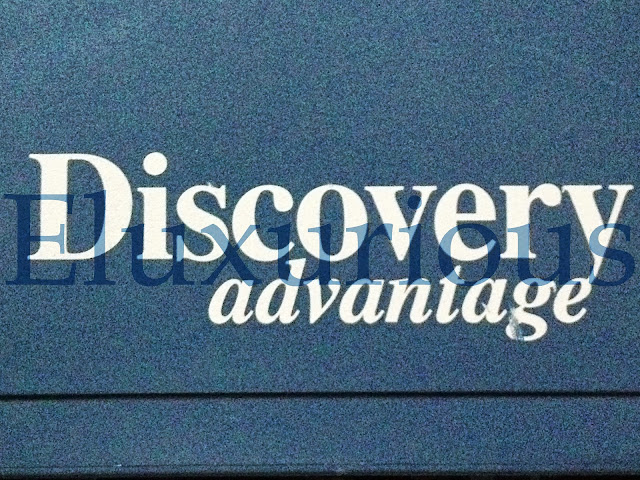Close up of the dual port. The handle simply plugs in like all the others, and the hose cord or electric hose pigtail cord for the Sidekick plugs into the left receptacle. It even has a power switch. This port harmonizes perfectly with the shape of the handle and 'bulkhead' (as Electrolux calls it), and adds tremendously to the functionality of the vacuum.
Rear view, with electric hose inserted and plugged in, and Sidekick ready to go. Wires, wires everywhere, but at least it's not as bad as the old days of hose cords (it's not even as bad as the days of electric braided hoses!). Incidentally, this machine would have come out with a plastic standard hose, and the user would have added the dual port, Sidekick, and hose cord. The electric hose in the picture, while it came with the Discovery Advantage, is not original to it.
Front view. The light beige or grey of the body still retains its original color, with very little fading or yellowing. Graphics and color-wise, the Discovery Advantage exactly resembles the Genesis, and in fact I'd say that the latter came out very shortly after the former.
One thing I noticed...the model number of the Discovery Advantage is 1572E, which is shared by the Discovery III, and both are rated at 8.1 amps (unless, of course, the power nozzle hood in this case was simply taken from a Discovery III). In fact, I'd say the only differences between these two models are color and logos, because the motors sound the same, and the performance is the same. There were also two other uprights with the name 'Discovery', namely the Discovery II and the Discovery Plus. I can't remember, but I THINK the Discovery Plus shared the same graphics and colors as the Discovery II, so I'm guessing the order of manufacture was: II, Plus, III, Advantage. Don't quote me on that, however. As for the matching cylinders, I have no idea...perhaps the Model 90 was one of them? There were so many machines released only for a short time by Aerus/Electrolux that its hard to keep track, not to mention the overlapping of one model line or part thereof with another.
Another thing I noticed only recently about the III and Advantage is that you can clearly see the outline of the space where the "Discovery II" logo was on the tail of the L on the power nozzle. Clearly the company didn't manufacture brand new power nozzle covers for subsequent models.
Incidentally, this is the last acquisition I'll be making, at least for a considerable time to come. I feel that I have more than enough of a collection to enjoy and use right now, and I'm not willing to spend any more money on any more machines, nor do I have the space to store them. I have a small, disused bedroom downstairs where all of my vacuums, parts, and supplies are stored, and, all things considered, I feel the situation is at a manageable and enjoyable point. I don't want my hobby to become a burden, which is what I fear will happen with any more acquisitions. In addition, I have a fairly decent representation of cleaners from different eras of Aerus/Electrolux history, and most are in a useable state, so, unless I win the lottery, now seems a good time to stop and enjoy/use/maintain what I have.





So is the Dual Port a plug-n-play attachment or is it hardwired into the machine?
ReplyDeleteSo is the Dual Port a plug-n-play attachment or is it hardwired into the machine?
ReplyDeleteMine is hardwired; not sure about later ones.
ReplyDeleteThere were 3 models of the Discovery II: 1500, 1500C (improved cord cleat), & 1572E (w/"bulkhead", lower cleat). All had 8.1A motors and 25' cords. I'm wondering if the DIII and DA have 8.1 or 8.5A motors, and if they have 25' or 35' cords.
ReplyDeleteBy the way, here are the color schemes and years of production: DII, D+ (sand/jade--1986-87); DIII (sand/taupe--1987-88); DA (lt. sand/navy--1988-89).
Thanks for the information. I checked my III and Advantage, and both are rated 8.1 amps, and both share Model Number 1572E. Both also have the 25 foot (original) cord as well.
Delete